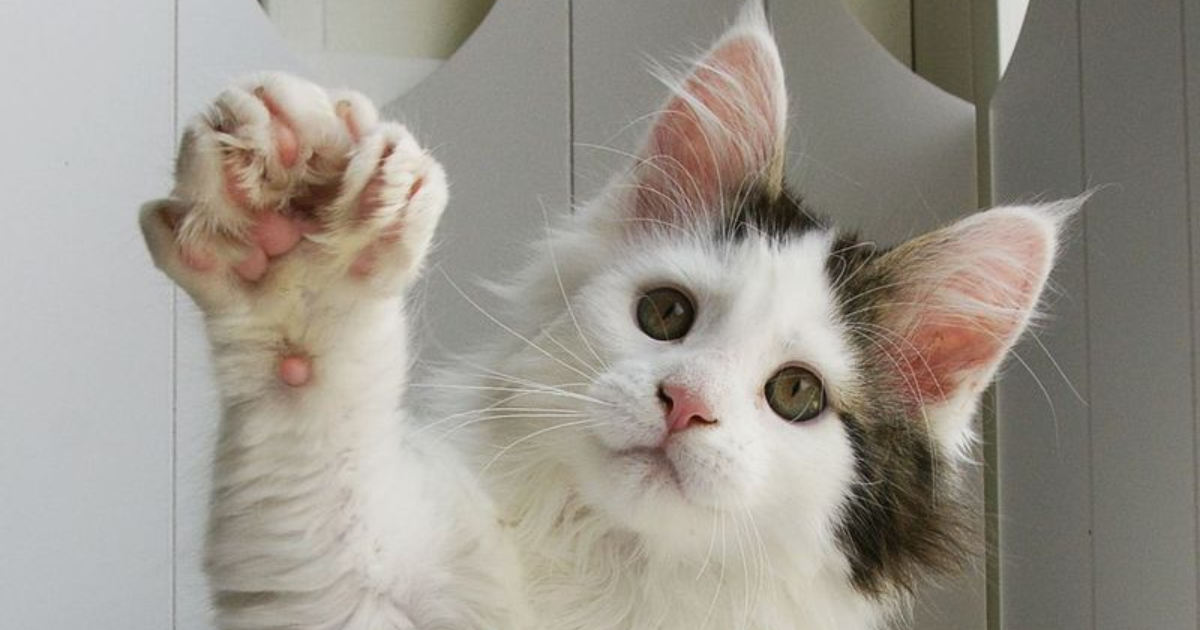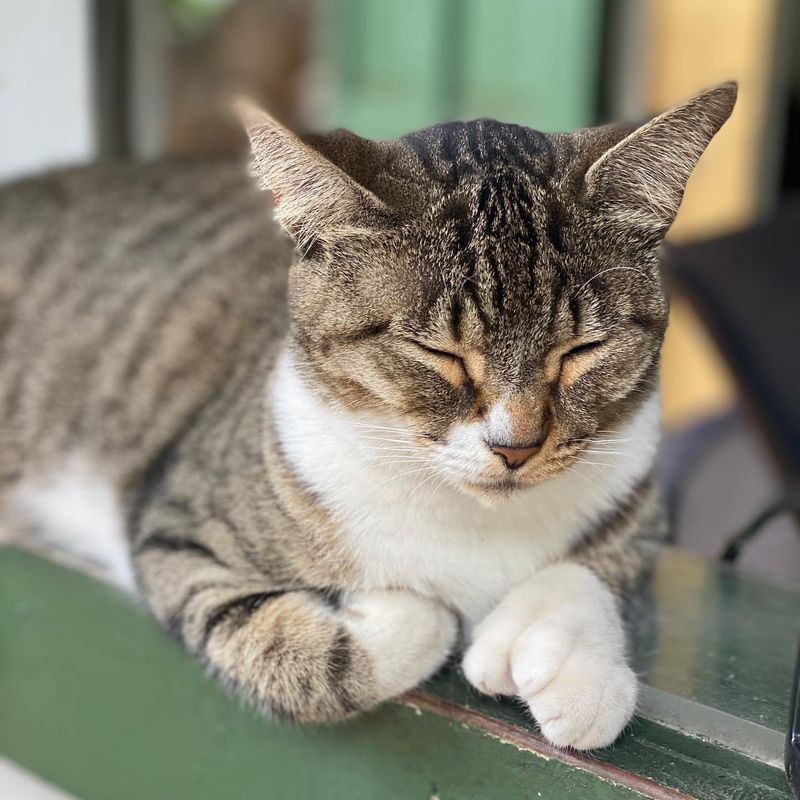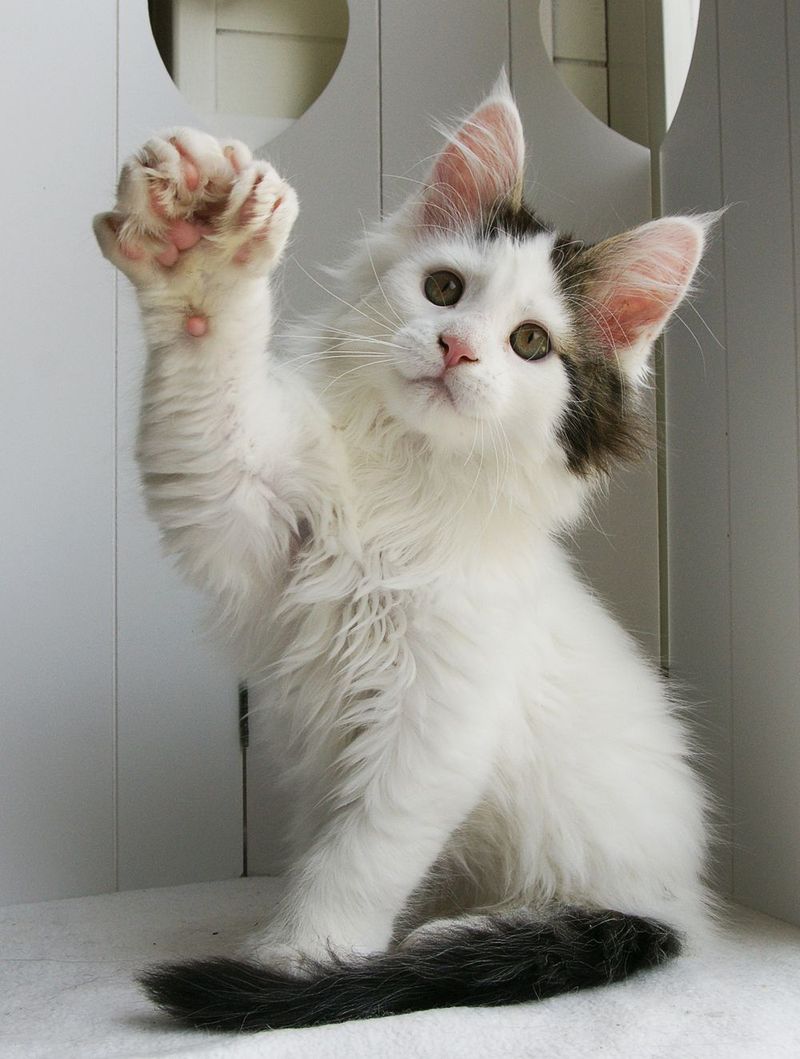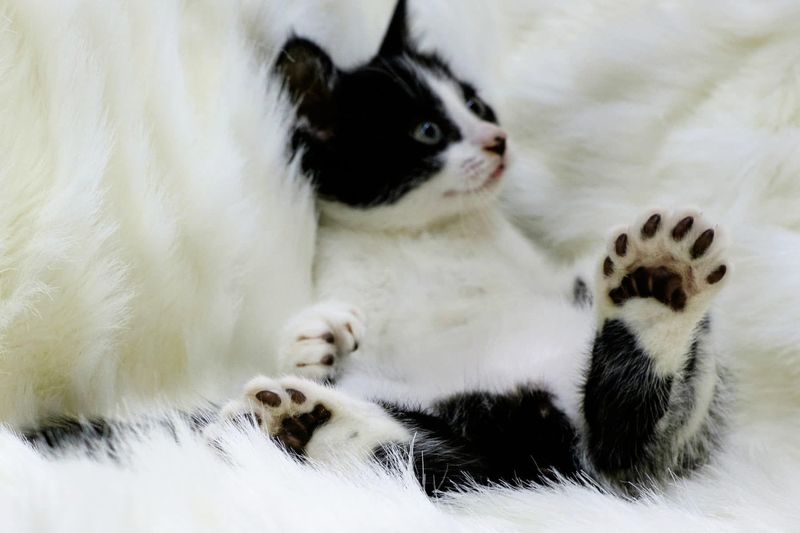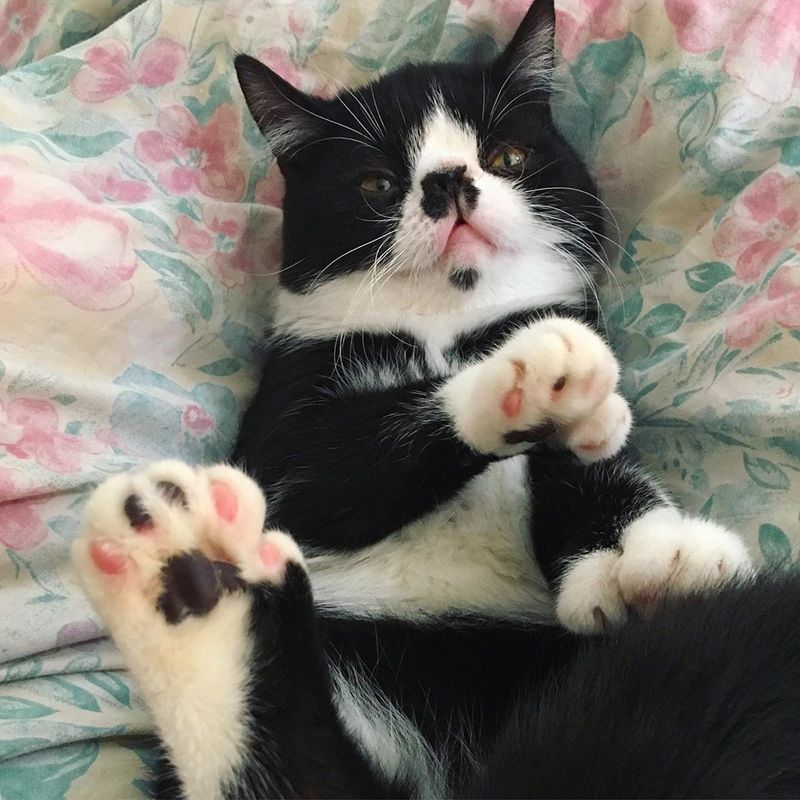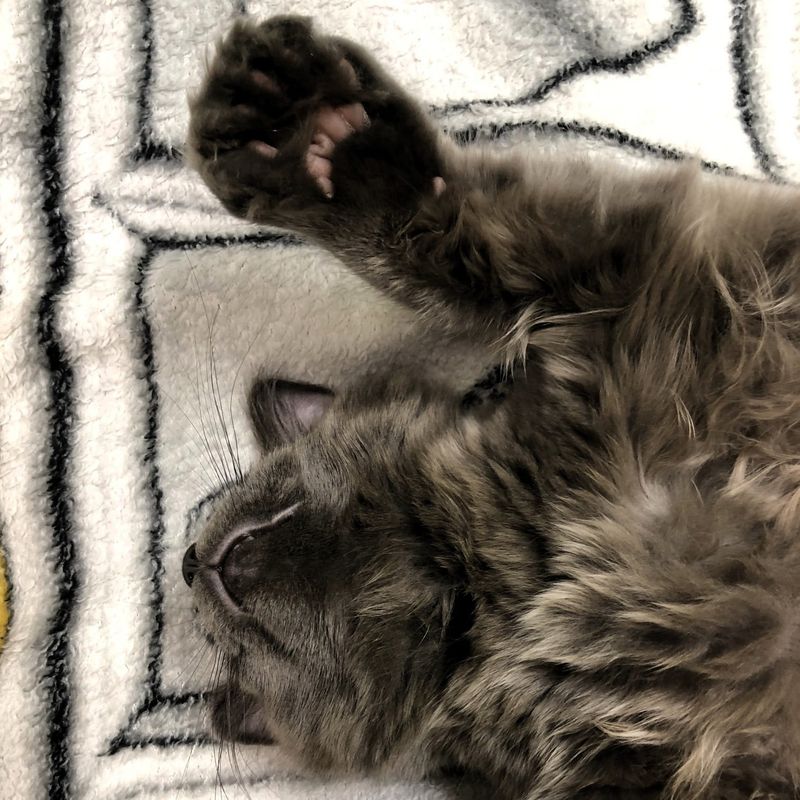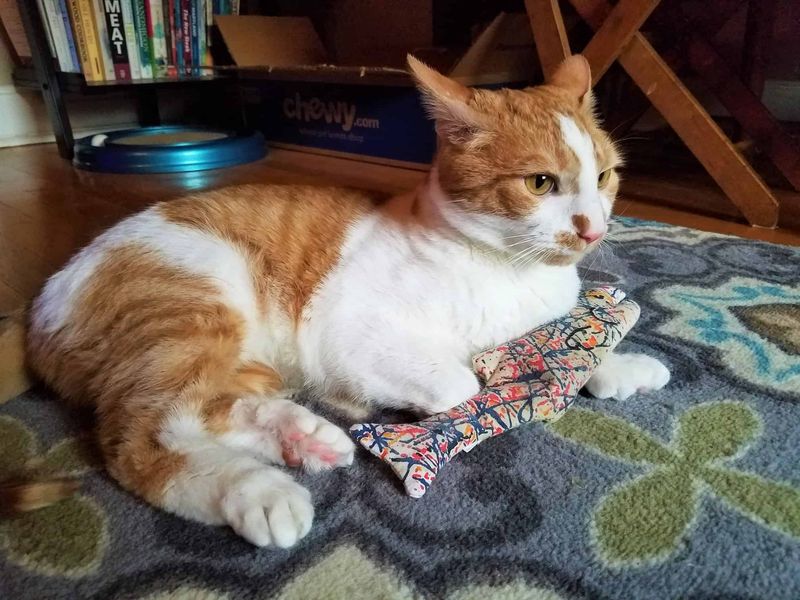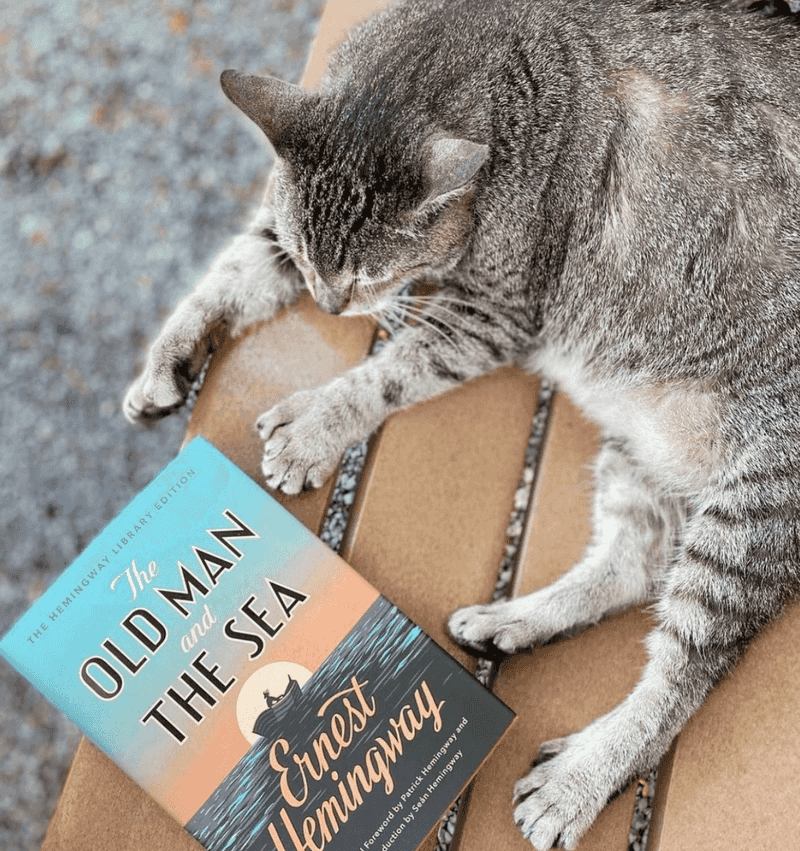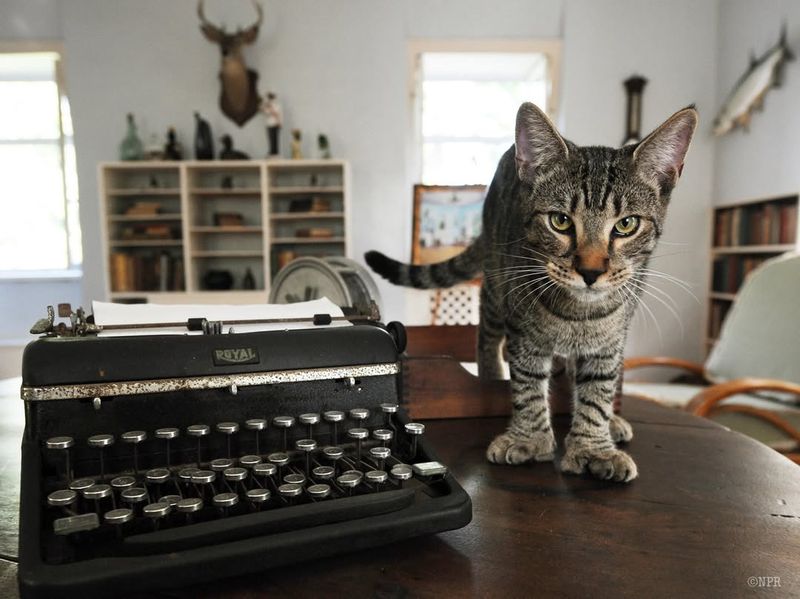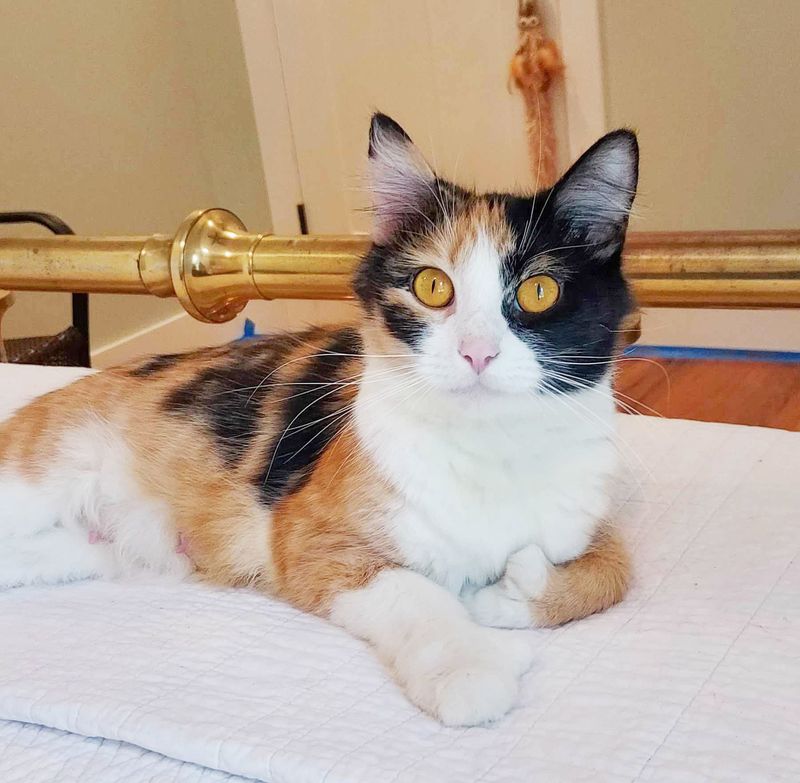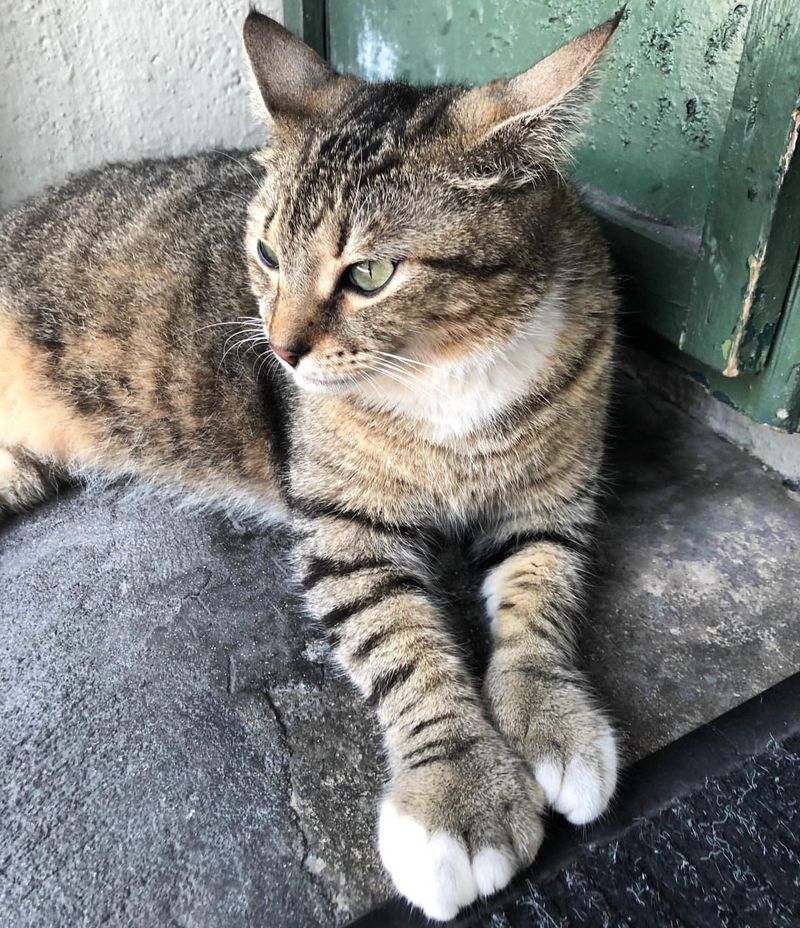📖 Table of Content:
Did you know there’s a special kind of cat out there that comes with bonus toe beans? Yep, we’re talking about polydactyl cats—those charming felines who make you do a double take when you see their adorable oversized mitts.
Whether they look like they’re rocking kitten-sized boxing gloves or auditioning to be the next Wolverine, these quirky cats have captured hearts all over the world.
Polydactyl cats aren’t just a visual treat; they come with a treasure trove of fascinating history, myths, and trivia that make them even more lovable. From being favored by sailors for their “lucky” feet to starring as literary muses for writers, these multi-toed marvels have some serious street cred.
Let’s dive into 12 fun facts about polydactyl cats that are bound to make you say, “How have I never heard of this before?!”
1. Historical Significance
Polydactyl cats have a rich history, especially among sailors in the 18th century. Sailors believed that these cats brought good luck and were superior mousers, making them popular on ships. Having a polydactyl cat on board was thought to protect against shipwrecks and storms.
These cats’ extra toes gave them better balance and maneuverability, which were essential on the rolling decks of ships.
Historical records suggest that these cats were primarily found along the East Coast of North America and in the United Kingdom, thanks to their seafaring companions. Their association with maritime life has cemented their place in folklore as mystical creatures capable of warding off evil spirits.
Today, the descendants of those shipboard polydactyls still roam the coastal regions, reminding us of their storied past.
2. Genetic Trait
The polydactyl trait in cats is a genetic mutation, specifically an autosomal dominant trait. This means only one parent needs to possess the gene to pass it on to their offspring. The mutation occurs on the ZRS cis-regulatory element, which affects the development of digits in the cat’s paws.
Interestingly, the number of extra toes can vary, with some polydactyl cats having up to 28 toes in total. While most cats have five toes on their front paws and four on their back, polydactyl cats typically have six or more on their front paws.
This genetic anomaly does not adversely affect the cat’s health and is purely a unique physical characteristic. Breeders and cat enthusiasts often celebrate this trait for its distinctiveness, though it does not impact the cat’s overall well-being or ability to function normally.
3. Hemingway Connection
The term “Hemingway cats” stems from the famous author Ernest Hemingway, who was an ardent admirer of polydactyl cats. Hemingway was gifted a six-toed cat by a ship’s captain, and this began his lifelong affection for these unique felines.
His home in Key West, Florida, now a museum, houses dozens of these cats, many of whom are descendants of his original pets. These cats roam the grounds freely and are a major attraction for visitors.
Visitors to the Hemingway House often delight in meeting these charismatic cats, which add a whimsical charm to the historic setting.
4. Variety of Breeds
Polydactylism is not confined to any single cat breed. This trait can appear in numerous breeds, including Maine Coons, American Shorthairs, and even some Siamese cats. The diversity among polydactyl cats is as varied as the breeds themselves, with each cat displaying its unique coat pattern, color, and personality.
Breeders sometimes specifically seek polydactyl cats for their breeding programs, valuing the distinctive trait and the charm it brings. Although not recognized as a separate breed, polydactyl cats are celebrated for their uniqueness and the quirks that come with extra toes.
This genetic trait’s widespread occurrence across different breeds highlights the random nature of genetic mutations, making every polydactyl cat a special find. Cat lovers around the world appreciate the variety and individuality these extra-toed cats bring to feline companionship.
5. Mythical Beliefs
Throughout history, polydactyl cats have been surrounded by myths and legends. Many cultures have attributed special powers or spiritual significance to these cats, believing them to be talismans of good fortune. Some sailors thought polydactyl cats could predict storms or navigate treacherous waters.
In certain folklore, these cats were seen as mystical creatures capable of warding off evil spirits or bringing prosperity to their owners. The unique appearance of polydactyl cats, with their mitten-like paws, adds to their mystical aura and has inspired stories of magic and wonder.
Today, while we understand the science behind polydactylism, the myths and tales continue to enchant those who come into contact with these special felines. Their rich history and association with the supernatural only add to their allure, making them cherished companions with a touch of mystery.
6. Functional Advantage
The extra toes of a polydactyl cat can offer functional advantages, enhancing their climbing and hunting capabilities. These cats often have better balance and dexterity, allowing them to navigate challenging terrains with ease.
The additional toes act like thumbs, giving them a stronger grip and greater precision when catching prey or exploring their surroundings. This unique feature has made polydactyl cats exceptional hunters, which was particularly valued during their time on ships.
While not all polydactyl cats show noticeable differences in behavior, many owners report their cats’ impressive agility and playful antics.
7. Popularity in Art
Polydactyl cats have not only charmed pet owners but have also captivated artists across the globe. Their distinctive appearance and whimsical charm make them a popular subject in various art forms, from paintings to sculptures.
Artists are drawn to the unique features of these cats, often portraying them in playful and imaginative scenarios.
The extra toes of polydactyl cats lend themselves to creative interpretations, inspiring artists to explore themes of uniqueness and individuality. This artistic fascination has helped elevate the cultural status of polydactyl cats, transforming them into symbols of creativity and inspiration.
Exhibitions featuring polydactyl cat art continue to attract audiences, showcasing the enduring appeal and artistic potential of these extraordinary felines. Whether in a gallery or on a canvas, polydactyl cats continue to inspire and delight art enthusiasts with their enchanting presence.
8. Record Holders
Polydactyl cats have made their mark in the record books, with some holding impressive titles for the number of toes. The current record holder is a cat named Jake, who boasts 28 toes in total, a remarkable feat that has garnered attention worldwide.
This extraordinary number of toes is not just a curiosity but a testament to the genetic diversity and surprises that nature can produce. Record-holding polydactyl cats often become local celebrities, attracting fans and cat lovers eager to meet these unique felines.
While having extra toes is not uncommon, achieving a number like 28 is rare, making cats like Jake stand out in the world of polydactyls.
9. Polydactyl Cats in Literature
Polydactyl cats have left their paw prints in literature, inspiring writers and appearing in stories that capture their unique charm. Famous authors, like the previously mentioned Ernest Hemingway, have contributed to their literary presence, with his own polydactyl cats becoming part of his legacy.
These cats often symbolize uniqueness and individuality in literature, serving as metaphors for characters who stand out from the crowd. Writers are drawn to the distinctive traits of polydactyl cats, using them to explore themes of difference and acceptance.
The literary world continues to embrace these extraordinary felines, with new stories and references emerging that celebrate their special qualities.
10. Famous Feline Residents
The Hemingway House in Key West, Florida, is home to one of the most famous colonies of polydactyl cats. These feline residents are descendants of Ernest Hemingway’s original polydactyl pet, Snow White.
The cats at the Hemingway House are not just tourists’ favorites but have become symbols of the estate’s rich history and Hemingway’s personal life. The staff cares for these cats with dedication, ensuring they continue to thrive in their historic habitat.
For many, a visit to the Hemingway House is a pilgrimage to see these beloved polydactyls, who embody the connection between literary heritage and feline fascination. Their presence on the grounds adds a living dimension to the stories of Hemingway’s life, delighting visitors from around the world.
11. Health and Care
Caring for a polydactyl cat is much like caring for any other cat, though their extra toes may require occasional attention. Regular veterinary check-ups are essential to ensure the health and well-being of these unique felines.
It’s important to monitor their paws for any signs of discomfort or overgrown nails, as the additional toes can sometimes lead to grooming challenges. Veterinarians familiar with polydactyl cats can provide specific care tips to address any concerns related to their extra digits.
Owners of polydactyl cats often find joy in managing these small quirks, appreciating the individuality of their pets. The extra care required is minimal, making polydactyl cats easy companions for those who enjoy their unique trait.
12. Polydactyl Cats in Pop Culture
Polydactyl cats have pawed their way into pop culture, appearing in films, comics, and even video games. Their distinctive appearance makes them ideal candidates for characters with unique abilities or personalities.
In comics, polydactyl cats often serve as sidekicks or quirky companions, adding a layer of charm and intrigue to the narrative. Their extra toes are sometimes portrayed as a superpower, endowing them with enhanced abilities or intelligence.
The fascination with polydactyl cats in pop culture reflects society’s broader appreciation for uniqueness and individuality. By appearing in various media, these cats continue to capture the imagination of audiences, reinforcing their status as beloved and iconic figures in both real life and fiction.
